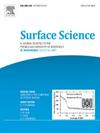X-ray photoelectron diffraction as one efficient tool for surface structure determination of corrugated 2D materials
IF 2.1
4区 化学
Q3 CHEMISTRY, PHYSICAL
引用次数: 0
Abstract
This brief review discusses the application of X-ray photoelectron diffraction (XPD) as an effective experimental tool for determining the surface structure of two-dimensional (2D) corrugated materials, such as graphene and hexagonal boron nitride. XPD stands out for its ability to provide precise atomic positions, interlayer distances, bond lengths, and bond angles. Such detailed experimental data are essential for refining theoretical models and complement the findings obtained through other techniques, like scanning probe microscopy (SPM). This brief review includes examples of surface structure studies on sp-hybridized corrugated monolayers, such as graphene on Ir(111), Fe-intercalated graphene on Ir(111), BN on Rh(111), and graphene on SiC(0001). XPD has uncovered significant structural details, such as corrugation amplitude and adsorption distances to the substrate, contributing to an enhanced understanding of the electronic, mechanical, optical, magnetic, and physicochemical properties of 2D materials.

x射线光电子衍射是测定二维波纹材料表面结构的有效工具
本文简要介绍了x射线光电子衍射(XPD)作为测定二维(2D)波纹材料(如石墨烯和六方氮化硼)表面结构的有效实验工具的应用。XPD的突出之处在于它能够提供精确的原子位置、层间距离、键长和键角。这些详细的实验数据对于完善理论模型和补充通过扫描探针显微镜(SPM)等其他技术获得的发现是必不可少的。这篇简短的综述包括sp2杂化波纹单层表面结构研究的例子,如石墨烯在Ir(111)上,铁嵌入石墨烯在Ir(111)上,hBN在Rh(111)上,石墨烯在SiC(0001)上。XPD揭示了重要的结构细节,如波纹振幅和与基板的吸附距离,有助于增强对二维材料的电子、机械、光学、磁性和物理化学性质的理解。
本文章由计算机程序翻译,如有差异,请以英文原文为准。
求助全文
约1分钟内获得全文
求助全文
来源期刊

Surface Science
化学-物理:凝聚态物理
CiteScore
3.30
自引率
5.30%
发文量
137
审稿时长
25 days
期刊介绍:
Surface Science is devoted to elucidating the fundamental aspects of chemistry and physics occurring at a wide range of surfaces and interfaces and to disseminating this knowledge fast. The journal welcomes a broad spectrum of topics, including but not limited to:
• model systems (e.g. in Ultra High Vacuum) under well-controlled reactive conditions
• nanoscale science and engineering, including manipulation of matter at the atomic/molecular scale and assembly phenomena
• reactivity of surfaces as related to various applied areas including heterogeneous catalysis, chemistry at electrified interfaces, and semiconductors functionalization
• phenomena at interfaces relevant to energy storage and conversion, and fuels production and utilization
• surface reactivity for environmental protection and pollution remediation
• interactions at surfaces of soft matter, including polymers and biomaterials.
Both experimental and theoretical work, including modeling, is within the scope of the journal. Work published in Surface Science reaches a wide readership, from chemistry and physics to biology and materials science and engineering, providing an excellent forum for cross-fertilization of ideas and broad dissemination of scientific discoveries.
 求助内容:
求助内容: 应助结果提醒方式:
应助结果提醒方式:


